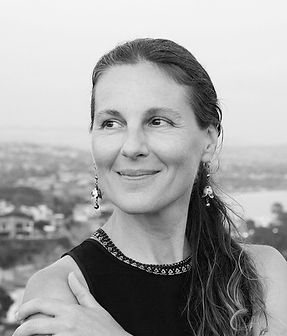top of page
.jpg)
.jpg)
.jpg)
The story of the fruitbridge
Agota designed the very first fruitbridge long ago while studying industrial design
at San Jose State. Frustrated that traditional fruit bowls trapped ethylene gas and spoiled fruit too quickly, she asked: What if we turned the fruit bowl inside out?
Through play with simple shapes and forms, a bridge-like stand emerged; open, airy, and ideal for holding fruit with minimal contact. In her kitchen, these early prototypes kept tomatoes, apples, and pears fresh much longer. She began sharing them with family, and the idea stuck.
In 2021, Agota earned a master’s degree in biomimicry and now teaches life-centered design thinking. Passionate about sustainability and minimizing waste even in her kitchen, she still uses her original fruitbridges every day. Because they work so well, she would like others to experience them too.
How fruitbridges are made
Each fruitbridge is made of food-grade stainless steel with low-energy methods like laser cutting and cold rolling, then hand-finished one by one. Nothing goes to waste -leftover pieces are reused for small products such as tealight holders and keychains.
Stainless steel gets its "stainless" property from its reaction with oxygen. After filing and sanding, stainless steel needs to stay dry for about 48 hours
so it can form a thin, invisible, passive film on its outer surface. This protective layer self-heals if scratched, preventing the underlying iron from oxidizing and rusting.
Designed to be easy to use, maintain, and clean, the fruitbridge gently cradles round fruits with minimum surface area, holding them up in the air, much like tree branches would.
About Agota
Agota was born in Hungary and grew up in Budapest. At 23, after completing teacher training college, she moved to California, where she studied art history and later earned a master’s in industrial design at San Jose State University.
To support her studies, she worked as a waitress in a sports bar -an experience that deepened her appreciation for people and connection. During this time, she discovered her true passion for design research and user-centered solutions.
One highlight was seeing her greatest inspiration, the legendary Hungarian-born designer Eva Zeisel, speak on stage in San Francisco -an unforgettable evening. Not surprisingly, today, Agota keeps a cherished vintage collection of Zeisel-designed pieces in her kitchen.



bottom of page
